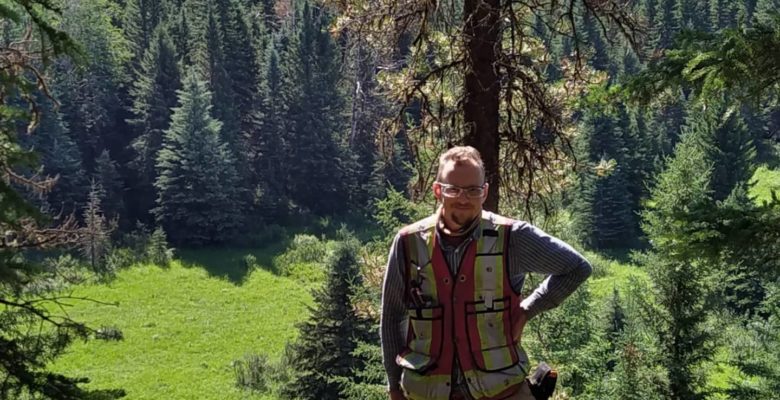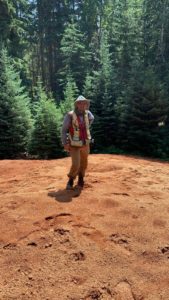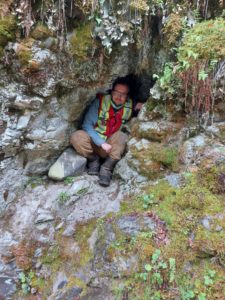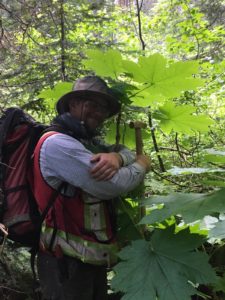Q&A With Field Director Ewald van Rooyen

There have been so many exciting advancements and changes happening at Circle this year, but the thing we’re most proud of for 2021 has been our team’s achievements and career milestones. The most recent one is Ewald becoming an approved Field Director for the Interior Plateau in BC! To recognize this achievement, we wanted to dedicate this blog feature to a Q & A all about Ewald.
For a bit of backstory on this achiever, Ewald is originally from South Africa but moved to Canada after completing his first year at the University of the Witwatersrand in Johannesburg. He continued his studies at the University of Calgary and graduated with a B.Sc. in Archaeology in 2012. He’s been a consulting archaeologist since then, finally joining Circle in the summer of 2018. We firmly believe that Ewald is legit the most interesting man in the world, and we are positive that by the time you finish reading this, you will undoubtedly agree.

What is one piece of field equipment that you absolutely cannot live without?
A trusty field knife! Whether it’s sharpening pencils for drawing site maps, clearing roots from stratigraphy photos, or harvesting mushrooms, there’s not a day that goes by where I don’t find a use for a knife. [Side note: Ewald made his own knife, hand-forged it and everything!]
What brought you into the consulting archaeology industry?
The outdoors, initially! Consulting archaeology offers the best of both worlds; it allows me to practice archaeology and my love of history in some of the most pristine natural environments out there.
What do you find the most challenging about being a consulting archaeologist?
Being away from home and from loved ones for extended periods of time remains the most challenging part of being a consulting archaeologist.
[Pssst… Check out our last blog post for information and resources on navigating personal relationships while in the field!]
What do you find most rewarding about your work?
Finding archaeological sites in wildly remote areas and realizing how extensive human interaction with the natural environment has always been.

Why did you pursue BC field directing when you have so much varied experience across Canada?
BC has an amazing diversity of ecoregions, and I think that this has led to some of the most fascinating archaeology as a result. In addition, the mountains, lakes and rivers have played such a pivotal role in creating the rich cultural landscape that we observe within the archaeological record. This natural and archaeological abundance, combined with BC’s experience-focused approach for field directing, made this province a perfect fit for me.
Where is your favourite place to work?
The Cariboo Plateau. This region offers amazing archaeology, fascinating history, and breathtaking views!
You have some super interesting hobbies (soap making, hunting, historically accurate furniture making, metalsmithing, beer brewing and mead making, to name a few). Tell us a little bit more about you got into these specific hobbies?
I love experimental archaeology, and my hobbies often offer me an additional way to understand people of the past. TV Shows like Tudor Monastery Farm, Victorian Farm, Edwardian Farm, etc., have served as major sources of inspiration, and I’ve dabbled in several of the handicrafts featured as a result. We’re rapidly losing traditional crafts in our modern world, and physically practicing and sharing these activities act as a direct form of cultural preservation.

At Circle, many of us think of you as our plant guy. Your knowledge of Canadian foliage is impressive, to say the least. Where did you learn about plants, and do you have a favourite?
I’ve mostly learned about plants through reference guides and by taking lots of photos in the field. Discovering their traditional uses is another invaluable tool to help me remember new species. Common juniper is one of my favourites due to its uses for food and drink.
Lastly, do you have an awesome find story to share with us?
One of the most extraordinary finds I’ve come across has been an obsidian biface in the boreal forest south of Grande Prairie. That biface has been one of the few artifacts that made my heart skip a beat!
Thanks for chatting with us, Ewald. We are so excited to see what other unique hobbies you take up, and congratulations again on becoming a Field Director!


